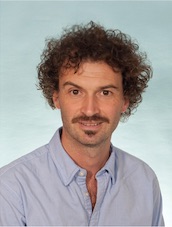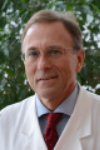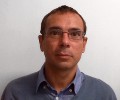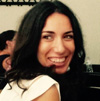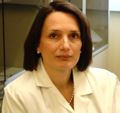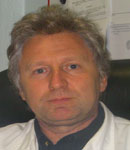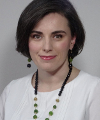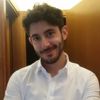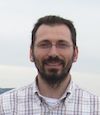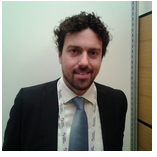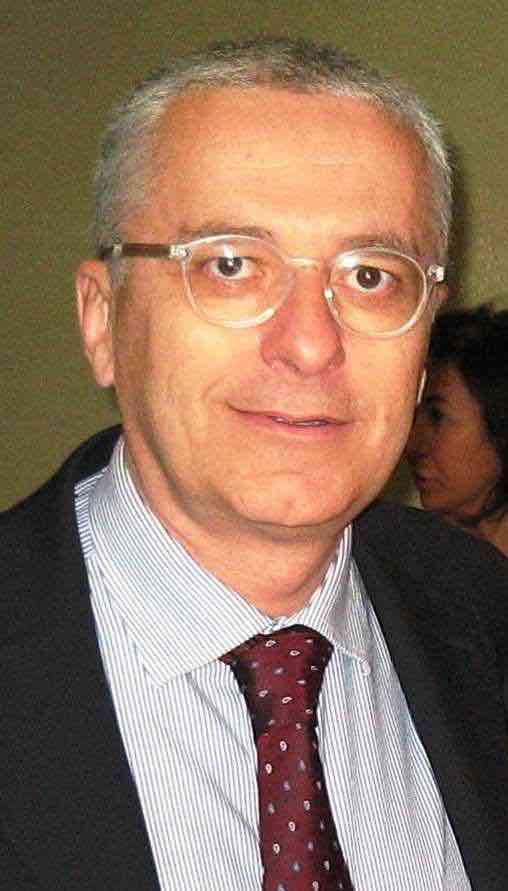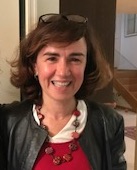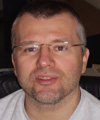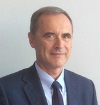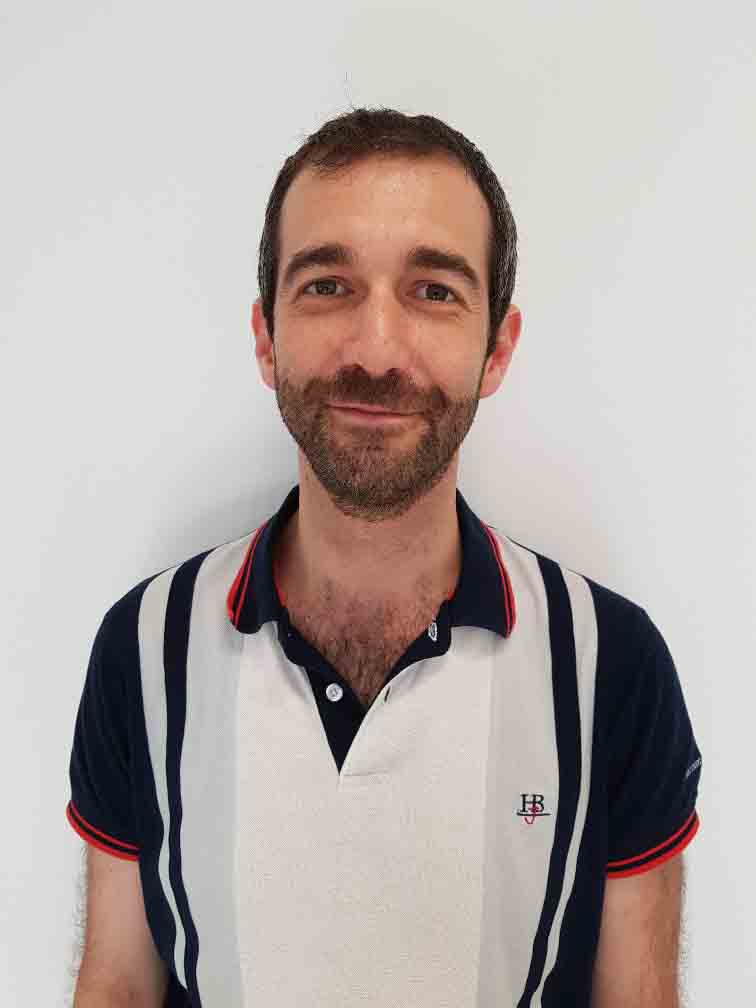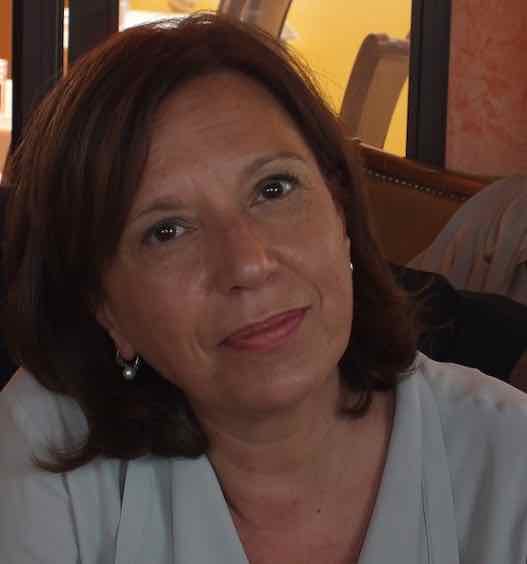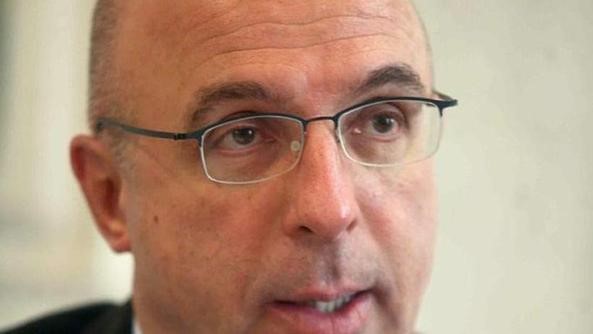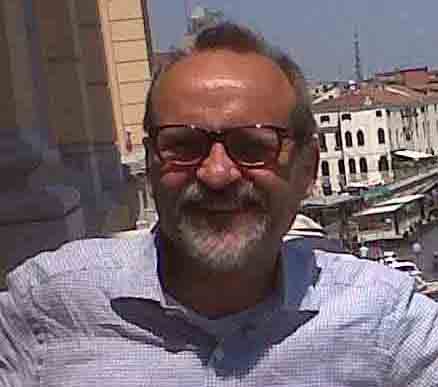Studying at the University of Verona
Academic calendar
The academic calendar shows the deadlines and scheduled events that are relevant to students, teaching and technical-administrative staff of the University. Public holidays and University closures are also indicated. The academic year normally begins on 1 October each year and ends on 30 September of the following year.
Course calendar
The Academic Calendar sets out the degree programme lecture and exam timetables, as well as the relevant university closure dates..
| Period | From | To |
|---|---|---|
| 1° semestre | Oct 1, 2020 | Dec 23, 2020 |
| 2° semestre | Feb 22, 2021 | May 28, 2021 |
| Session | From | To |
|---|---|---|
| Iscrizione ai corsi elettivi I semestre | Sep 4, 2020 | Oct 2, 2020 |
| Sessione per studenti fuori corso | Oct 1, 2020 | Sep 30, 2021 |
| Sessione invernale | Jan 4, 2021 | Feb 19, 2021 |
| Iscrizione ai corsi elettivi II semestre | Jan 13, 2021 | Feb 16, 2021 |
| Sessione estiva VI anno | Apr 1, 2021 | Jul 30, 2021 |
| Sessione estiva | Jun 3, 2021 | Jul 30, 2021 |
| Sessione autunnale | Sep 1, 2021 | Sep 30, 2021 |
| Session | From | To |
|---|---|---|
| Sessione straordinaria 2019/2020 - I laureandi straordinaria devono terminare gli esami entro il 19 febbraio 2021 | Mar 15, 2021 | Mar 26, 2021 |
| Sessione estiva - I laureandi nella sessione di luglio devono terminare gli esami entro il 15 giugno 2021 | Jul 5, 2021 | Jul 15, 2021 |
| Sessione autunnale - I laureandi di ottobre devono terminare gli esami entro il 25 settembre 2021 | Oct 11, 2021 | Oct 22, 2021 |
| Period | From | To |
|---|---|---|
| Festa dell'Immacolata | Dec 8, 2020 | Dec 8, 2020 |
| Vacanze Natalizie | Dec 24, 2020 | Jan 3, 2021 |
| VACANZE PASQUALI | Apr 2, 2021 | Apr 5, 2021 |
| Santo Patrono | May 21, 2021 | May 21, 2021 |
| Vacanze Estive | Aug 9, 2021 | Aug 15, 2021 |
| Description | Period | From | To |
|---|---|---|---|
| Esercitazioni, Attività pratiche, Tirocini professionalizzanti | Esercitazioni, Attività pratiche, Tirocini professionalizzanti | Oct 1, 2020 | Sep 30, 2021 |
Exam calendar
Exam dates and rounds are managed by the relevant Medicine Teaching and Student Services Unit.
To view all the exam sessions available, please use the Exam dashboard on ESSE3.
If you forgot your login details or have problems logging in, please contact the relevant IT HelpDesk, or check the login details recovery web page.
Should you have any doubts or questions, please check the Enrollment FAQs
Academic staff
 amod101@yahoo.it; antonio.amodio@ospedaleuniverona.it
amod101@yahoo.it; antonio.amodio@ospedaleuniverona.it

Bagante Fabio
 fabio.bagante@univr.it
fabio.bagante@univr.it
 0458124411
0458124411

Bassi Claudio
 claudio.bassi@univr.it
claudio.bassi@univr.it
 +39 045 812 4553
+39 045 812 4553

Bisoffi Zeno
 zeno.bisoffi@sacrocuore.it
zeno.bisoffi@sacrocuore.it
 +390456013326
+390456013326
 rebecca.casari@aovr.veneto.it
rebecca.casari@aovr.veneto.it
 giuseppe.faggian@univr.it
giuseppe.faggian@univr.it
 davide.gatti@univr.it
davide.gatti@univr.it
 guido.martignoni@univr.it
guido.martignoni@univr.it
 oliviero.olivieri@univr.it
oliviero.olivieri@univr.it
 nicola.pelizzari@univr.it
nicola.pelizzari@univr.it
Pighi Michele
 michele.pighi@univr.it
michele.pighi@univr.it
 0458122320
0458122320
 sara.pilotto@univr.it
sara.pilotto@univr.it
 daniele.prati@univr.it
daniele.prati@univr.it
 elda.righi@univr.it
elda.righi@univr.it

Scuro Alberto
 alberto.scuro@univr.it
alberto.scuro@univr.it
 +39 045 812 4413
+39 045 812 4413
 jacopo.weindelmayer@aovr.veneto.it
jacopo.weindelmayer@aovr.veneto.it
Study Plan
The Study Plan includes all modules, teaching and learning activities that each student will need to undertake during their time at the University.
Please select your Study Plan based on your enrollment year.
1° Year
| Modules | Credits | TAF | SSD |
|---|
2° Year activated in the A.Y. 2021/2022
| Modules | Credits | TAF | SSD |
|---|
3° Year activated in the A.Y. 2022/2023
| Modules | Credits | TAF | SSD |
|---|
4° Year activated in the A.Y. 2023/2024
| Modules | Credits | TAF | SSD |
|---|
5° Year It will be activated in the A.Y. 2024/2025
| Modules | Credits | TAF | SSD |
|---|
6° Year It will be activated in the A.Y. 2025/2026
| Modules | Credits | TAF | SSD |
|---|
| Modules | Credits | TAF | SSD |
|---|
| Modules | Credits | TAF | SSD |
|---|
| Modules | Credits | TAF | SSD |
|---|
| Modules | Credits | TAF | SSD |
|---|
| Modules | Credits | TAF | SSD |
|---|
| Modules | Credits | TAF | SSD |
|---|
Legend | Type of training activity (TTA)
TAF (Type of Educational Activity) All courses and activities are classified into different types of educational activities, indicated by a letter.
Free choice courses
Physics-Medical statistics (2020/2021)
The teaching is organized as follows:
STATISTICA MEDICA
Credits
6
Period
See the unit page
Location
VERONA
Academic staff
See the unit page
Learning outcomes
The course is an introduction to understanding and appraising scientific methods used in quantitative biological and clinical research. Emphasis is on methods used to derive scientific laws or clinical relevant information from experimental or observational data, and on the applications of Physics in Medicine. The course aims to teach elementary statistical and mathematical methods used in the research, the principles of study design and experiments in bio-medicine. Another aim is to teach principles of mechanic, fluid dynamics, optics , thermodynamics and electrology.
Course aims and objectives
The course aims to teach the essential elements of research methodology, statistics and the main principle of physics in biology. The focus is mainly on interpretation and understanding of appropriate methodology.
Topics covered by the course are:
- Measurement and its properties
- The types of data generated in research studies
- Statistical methods and probability models used to describe biological data
- The most common inferential methods to analyse categorical or continuous data, including regression methods
- Physical laws in biology and medicine
Program
------------------------
MM: STATISTICA MEDICA
------------------------
------------------------ MM: Esercitazioni di Statistica Medica ------------------------ Practical exercises dealing with the theoretical program will be performed. ------------------------ MM: Lezioni di Statistica Medica ------------------------ SYLLABUS The following topics will be addressed: 1. Measurements performed in biomedicine: precision, accuracy, repeatability and validity. 2. Basic statistical methods to describe, interpret and present quantitative information collected on groups of individuals or other statistical units. 3. Probability: definitions, basic rules to compute probabilities and expected events. 4. Evaluation of a screening procedure when a gold standard is available: sensitivity, specificity, positive and negative predictive values, positive and negative likelihood ratio. Intra-rater and inter-rater agreement. 5. Main probabilistic models, useful to approximate the distribution of a biological variables within a population (binomial and gaussian distributions). 6. Basic design in observational and experimental research: random sampling and randomization. 7. Main inferential methods: confidence intervals to estimate parameters, and hypothesis testing to base decisions on experimental/observational evidence. 8. Basic concepts of multivariable statistical analysis: multiple linear regression to study quantitative outcomes, logistic model to study dichotomous outcomes, and Cox model to study survival. 9. Evidence-Based Medicine; systematic reviews and meta-analyses.
------------------------
MM: FONDAMENTI DI FISICA
------------------------
1. Introduction Units, standards and the SI system, dimensional analysis. Practical units. Scalar and Vector quantities. Operations on vectors (addition, subtraction, dot product, cross product). Graphic and Analytical Methods. 2. Elements of Mechanics Position, displacement, velocity and acceleration. Average and instantaneous velocity. Uniform motion. Motion at constant acceleration. Uniform circular motion. Motion in two dimensions. Dynamics: Newton’s Laws of motion. Weight: the force of gravity. The normal force. Linear Momentum and its conservation. Work and Energy. Theorem of kinetic energy. Conservative and dissipative forces. Potential energy, mechanical energy and its conservation. Gravitational and elastic potential energy . Power. Angular quantities. Torque of a force. Couple of forces. Moment of inertia, Angular momentum and its conservation. Equilibrium of rigid bodies. Levers of I, II; III kind. Static equilibrium analysis in some real situations as muscles and joints. Mechanical and technological properties of materials: Young's modulus and Hooke's law. 3. Fluids Density and specific gravity. Definition of pressure, flow rate, official and practical units. Measurement of pressure, manometers. Sphygmomanometer. Pascal's Law, Stevin's law, Archimedes' principle. Ideal fluid, Equation of continuity, Bernoulli's Equation. Applicatons of Bernoulli’s equation. Venturi effect. Viscous fluid, viscosity measurement and units. Poiseuille’s law, hydraulic resistance. Exercises and Applications in the circulatory system. Laminar or turbulent flow, the Reynolds number. Cardiac work. Kinetic factor. Surface tension. Laplace’s law. Applications of the Laplace’s. Capillarity. 4. Electric Phenomena Electric charge, definitions and units. Coulomb's law. Electric field, Energy, Electric Potential. Definition and units. Electric dipole, dipole layer, potential of a quiescent cell and of a front of depolarization. Electric currents, Ohm's law, Joule's law, resistors in series and parallel, Capacity, capacitors in series and in parallel. Electric power. RC circuit. Basics of Electromagnetism: Magnets and magnetic fields, magnetic fields produced by electric currents, force on an electric current in a magnetic field; definition and units. Lorentz force, Ampere's and Faraday-Neumann-Lenz Laws. Examples. Principle of operation of some medical devices. 5. Thermodynamics Temperature, heat, specific heat. Definitions and units. Thermometer and temperature scales. Heat transfer by conduction, convection, radiation. Evaporation. Gas laws and absolute temperature. Thermodynamic transformations. First and second law of thermodynamics. Entropy. 6. Optics and Waves Wave phenomena, mechanical and electromagnetic waves. Wavelength, frequency and speed of propagation, intensity. Sound. Light: geometric optics. Laws of reflection and refraction. Optical fiber and medical applications. Plane mirror. Concave mirror. Paraxial approximation of geometric optics. Thin lenses, lens diopters. Equation of conjugate points for the plane mirror, concave mirror and thin lenses. Construction of images. The simple microscope. 7. Atomic and Nuclear Physics, Radioactivity and Radiation Protection (mention). Production of X-ray fluorescence and bremsstrahlung. Electron volts, definition and use. Interaction of X-rays - gamma with matter: photoelectric effect, Compton effect, pair production. Half value thickness. Fundamentals of diagnostic radiology. Radioactivity, law of radioactive decay.
Bibliography
| Author | Title | Publishing house | Year | ISBN | Notes |
|---|---|---|---|---|---|
| Daniel WW, Cross CL | Biostatistica (Edizione 3) | Edises | 2019 | ||
| Norman G, Streiner D | Biostatistica: quello che avreste voluto sapere… (Edizione 2) | Casa Editrice Ambrosiana, Milano | 2015 | ||
| Verlato G, Zanolin ME | Esercizi di Statistica Medica, Informatica ed Epidemiologia | Libreria Cortina Editrice, Verona | 2000 | ||
| Swinscow TDV, Campbell MJ | Le basi della Statistica per scienze bio-mediche | Edizioni Minerva Medica S.p.A., Torino | 2004 | ||
| Bland M | Statistica Medica | APOGEO, Milano | 2009 | 9788850327386 | |
| Scannicchio D. | Fisica Biomedica | Edises | 2013 | 978 88 7959 781 4 | |
| Giancoli D. | Fisica. Principi e applicazioni | CEA | 2006 | 8808087735 |
Examination Methods
------------------------
MM: STATISTICA MEDICA
------------------------
------------------------ MM: Esercitazioni di Statistica Medica ------------------------ In the second part of the exam students will have to solve problems of inferential statistics, which will require to compute confidence intervals and/or to perform simple statistical tests. For this purpose, students will be enabled to use a computer equipped with a spreadsheet. ------------------------ MM: Lezioni di Statistica Medica ------------------------ TYPE OF EXAMS A written exam will be performed in the computer room. In the first part, students will have to answer about 30 multiple choice questions with 5-8 possible answers.
------------------------
MM: FONDAMENTI DI FISICA
------------------------
Written test consisting of simple exercises on the topics covered during the course and multiple choice questions. Possible oral exam (optional), which aims to acquire, if necessary, further elements for evaluation of students and eventually clarify aspects of the written test.
Career prospects
Module/Programme news
News for students
There you will find information, resources and services useful during your time at the University (Student’s exam record, your study plan on ESSE3, Distance Learning courses, university email account, office forms, administrative procedures, etc.). You can log into MyUnivr with your GIA login details: only in this way will you be able to receive notification of all the notices from your teachers and your secretariat via email and soon also via the Univr app.
Erasmus+ e altre esperienze all'estero
Extra courses and activities
Opzioni (cambio di ordinamento)
Studenti iscritti alla classe LM/41 (Classe delle lauree magistrali in medicina e chirurgia)
Il MUR, con nota prot. n. 8610 del 25/3/2020 avente oggetto: “Abilitazione all’esercizio della professione di Medico-Chirurgo - art. 102 - Decreto legge 17 marzo 2020 n. 18 (convertito con modificazioni dalla L. 24 aprile 2020, n. 27), dispone l’adeguamento dell’ordinamento della classe LM/41 alle normative citate in oggetto.
Coloro i quali hanno concluso/concluderanno il tirocinio pratico-valutativo pre-lauream con giudizio di idoneità (ai sensi del DM 58/2018), conseguita la laurea, sono abilitati all’esercizio della professione di medico-chirurgo e possono procedere all’iscrizione presso l’Ordine dei Medici.
Rilascio del titolo di abilitazione
Ai fini del rilascio dell’abilitazione professionale è richiesto il pagamento delle seguenti tasse:
- tassa erariale pari a € 49,90 da versarsi prima che inizi la frequenza del tirocinio pratico valutativo
- tassa regionale di abilitazione da versarsi all’atto della consegna del titolo di abilitazione.
Studenti iscritti alla classe 46/S (Classe delle lauree specialistiche in medicina e chirurgia) e ordinamenti previgenti (attualmente fuori corso) oppure studenti iscritti alla classe LM/41 con coorti antecedenti alla coorte 2014 (attualmente fuori corso).
Il MUR, con nota prot. n. 8610 del 25/3/2020 avente oggetto: “Abilitazione all’esercizio della professione di Medico-Chirurgo - art. 102 - Decreto legge 17 marzo 2020 n. 18” dispone che, gli iscritti agli ordinamenti previgenti, con tirocinio pratico previsto post – laurea (ai sensi del DM 445/2001), ferme restando le norme sulla decadenza dagli studi, possono concludere il percorso di studio senza dovere necessariamente acquisire, ai fini dell’ammissione all’esame finale di laurea, il giudizio di idoneità del suddetto tirocinio pratico valutativo. In tal caso il diploma di laurea che rilascerà l’Ateneo avrà la sola valenza di titolo accademico. Resterà ferma, in ogni caso la possibilità per tali soggetti di conseguire eventualmente l’abilitazione all’esercizio della professione di medico-chirurgo in un momento successivo, secondo le modalità di cui al comma 2 dell’art.102, cioè conseguendo la valutazione del tirocinio prescritta dal D.M. n. 445/2001. L’Ateneo continuerà a predisporre un separato diploma di abilitazione.
Si ricorda che ai suddetti studenti è in ogni caso consentita l’opzione al nuovo ordinamento secondo i termini e le modalità previste.
Documents
| Title | Info File |
|---|---|
|
|
pdf, it, 525 KB, 14/06/21 |
|
|
pdf, it, 419 KB, 14/06/21 |
|
|
pdf, it, 377 KB, 12/12/23 |
|
|
pdf, it, 483 KB, 10/02/23 |
|
|
pdf, it, 481 KB, 10/02/23 |
Timetable
Documents
| Title | Info File |
|---|---|
|
|
pdf, it, 19 KB, 12/02/24 |
|
|
pdf, it, 18 KB, 28/02/24 |
|
|
pdf, it, 21 KB, 29/02/24 |
|
|
pdf, it, 21 KB, 27/02/24 |
|
|
pdf, it, 18 KB, 07/03/24 |
|
|
pdf, it, 12 KB, 21/02/24 |
|
|
pdf, it, 781 KB, 29/02/24 |
|
|
pdf, it, 280 KB, 29/11/23 |
|
|
pdf, it, 548 KB, 22/09/23 |
Graduation
Documents
| Title | Info File |
|---|---|
|
|
pdf, it, 353 KB, 28/02/24 |
|
|
pdf, it, 249 KB, 22/02/24 |
|
|
pdf, it, 354 KB, 22/02/24 |
|
|
pdf, it, 248 KB, 22/02/24 |
|
|
pdf, it, 351 KB, 22/02/24 |
|
|
pdf, it, 249 KB, 22/02/24 |
|
|
pdf, it, 104 KB, 25/09/23 |
|
|
pdf, it, 838 KB, 17/03/22 |
|
|
pdf, it, 826 KB, 27/10/21 |













